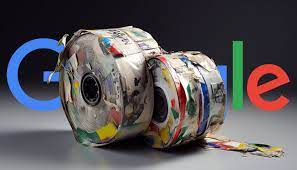YouTube, the popular video sharing platform, has recently announced updates to its monetization guidelines regarding certain sensitive topics. These changes aim to provide creators with more flexibility in monetizing their content while still maintaining a safe and supportive environment for users. In this article, we will explore the key updates made by YouTube and discuss their implications for creators and advertisers.
Understanding YouTube’s Advertiser-Friendly Content Guidelines
YouTube’s advertiser-friendly content guidelines are designed to ensure that ads are not displayed alongside potentially controversial or sensitive content. These guidelines help protect advertisers from associating their brands with content that may not align with their values or target audience. However, the previous guidelines have been criticized for being too restrictive, impacting creators’ ability to monetize certain types of content.
Broader Range of Monetizable Topics
In response to feedback from creators, YouTube has expanded the range of topics that can be monetized on the platform. Previously, videos discussing sensitive topics such as abortion and adult sexual abuse were subject to demonetization. However, YouTube now allows creators to monetize content that discusses these topics without going into graphic detail. This change acknowledges the value of such content as a helpful resource for users and aims to prevent disincentivization through demonetization.
“We want to ensure that wherever possible, controversial issues discussed in a non-descriptive and non-graphic way aren’t disincentivized through demonetization.” – YouTube
This update is significant for creators who have been hesitant to cover certain sensitive topics due to the risk of losing revenue. It provides them with the opportunity to address these subjects in a responsible manner while still being able to monetize their content.
Restricting Monetization of Eating Disorder Content
While YouTube has expanded monetization opportunities for some topics, it has also taken steps to further restrict the monetization of content related to eating disorders. The platform has aligned its monetization rules with its broader community guidelines to ensure that content promoting harmful eating habits does not receive ad revenue.
Content that focuses on eating disorders and shares triggers like guides around binging, hiding, or hoarding food, or abusing laxatives will not be eligible for ad revenue. However, educational or documentary content and survivor stories that reference these aspects of having an eating disorder without promoting such activities will not be impacted by this change.
This update demonstrates YouTube’s commitment to promoting responsible content creation and protecting vulnerable users from potentially harmful influences. Creators who produce content related to eating disorders should be aware of these guidelines and ensure that their content aligns with YouTube’s policies.
Implications for Creators and Advertisers
The updates to YouTube’s monetization guidelines have significant implications for both creators and advertisers. Creators now have more freedom to discuss sensitive topics without the fear of demonetization, allowing them to provide valuable and informative content to their audience. This change may encourage creators to explore new areas of interest and create a more diverse range of content.
For advertisers, these updates mean that their ads may appear alongside a broader range of content. Advertisers should carefully consider their target audience and brand image to ensure that their ads align with the content they are supporting. It is essential for advertisers to review the context in which their ads are displayed and make informed decisions about ad placements.
Conclusion
YouTube’s recent updates to its monetization guidelines demonstrate the platform’s commitment to balancing creator freedom and user safety. The expanded range of monetizable topics allows creators to explore sensitive subjects without fear of demonetization, enabling them to provide valuable resources to their audience. However, the restrictions on monetizing content related to eating disorders highlight YouTube’s dedication to promoting responsible content creation.
As creators and advertisers navigate these updates, it is crucial for them to stay informed about YouTube’s policies and guidelines to ensure compliance and create a positive experience for users. By understanding and adapting to these changes, creators and advertisers can continue to thrive on YouTube while maintaining a safe and supportive environment for all users.


No comments! Be the first commenter?